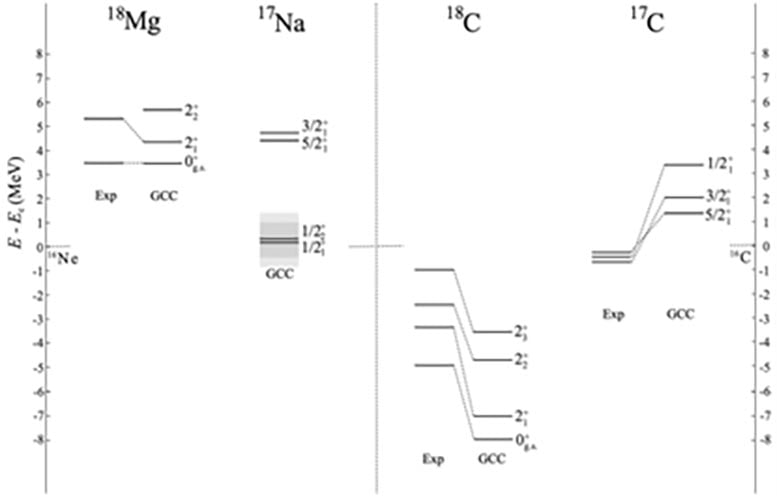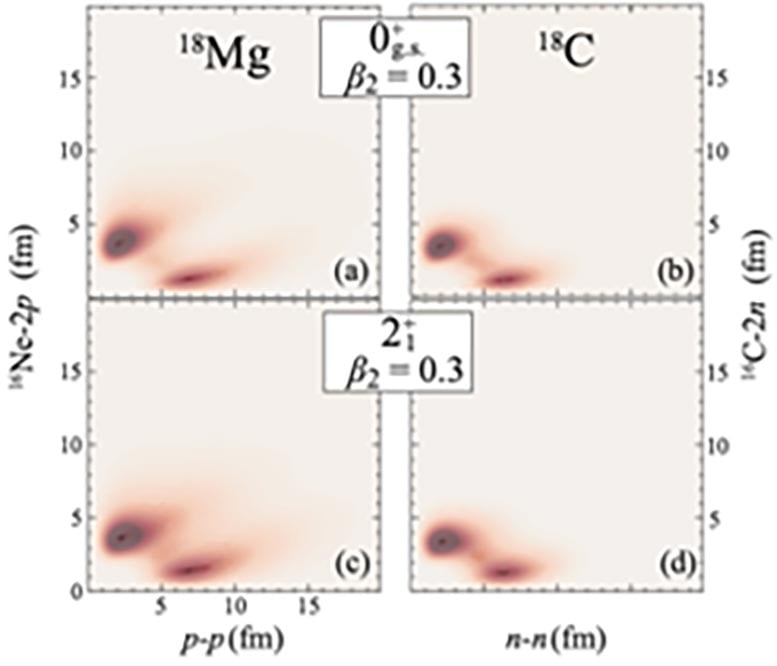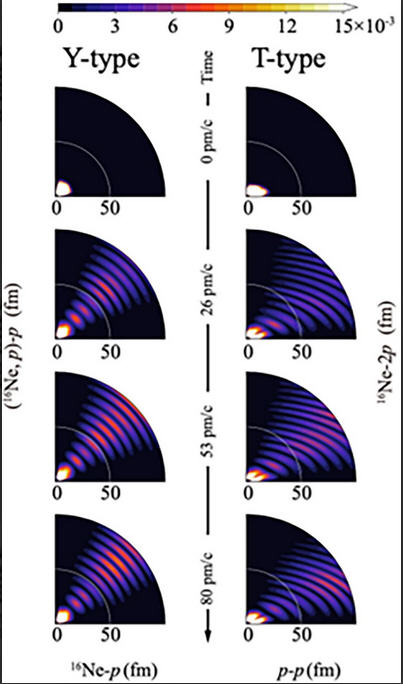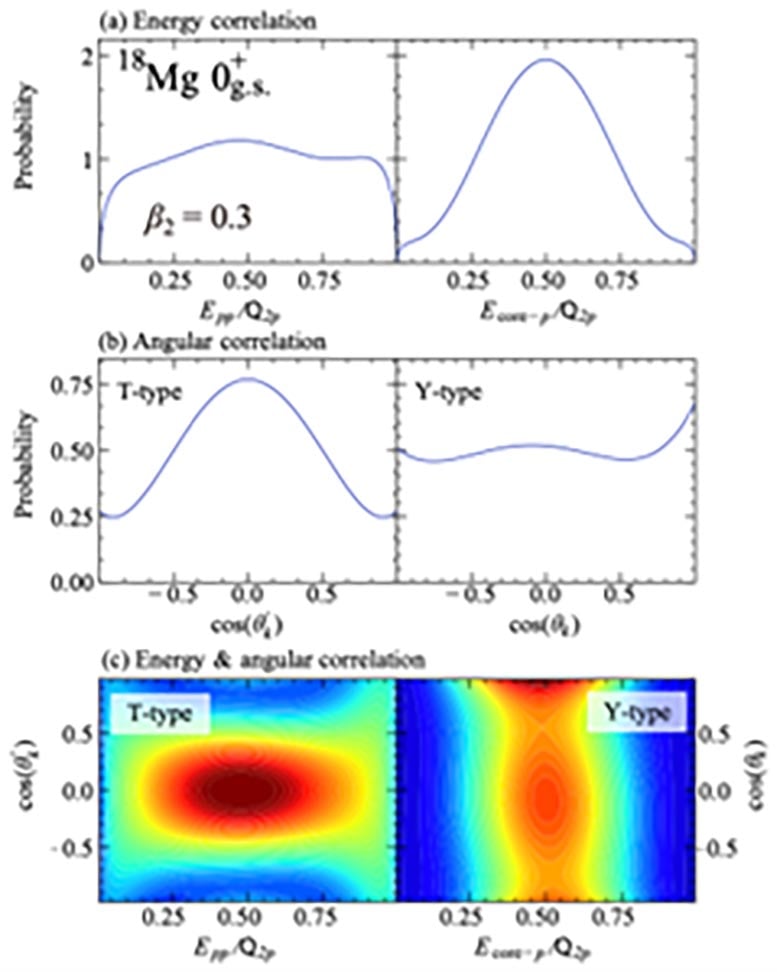博文
打破稳定性障碍:独特的同位素违反核规则
 精选
精选
||
打破稳定性障碍:独特的同位素违反核规则
诸平
据《科技日报》(SciTechDaily)网站2024年9月7日报道来自《核科学与技术》(Nuclear Science and Techniques)提供的消息,打破稳定性障碍:独特的同位素违反核规则(Breaking the Stability Barrier: Unique Isotope Defies Nuclear Rules)。
新的研究揭示了18Mg独特的双质子衰变(two-proton decay),影响了核物理理论和应用。
一组研究人员发现,18Mg经历了一种独特的多质子衰变机制,它会先后释放出两对质子。这一过程与传统的放射性衰变不同,强调了核力的复杂相互作用,与长期以来的核模型不同。
该研究由中国多家机构的科学家合作完成,并于2024年6月26日已经在在《核科学与技术》(Nuclear Science and Techniques)杂志发表——Long Zhou, De-Qing Fang, Si-Min Wang, Hui Hua. Structure and 2p decay mechanism of 18Mg. Nuclear Science and Techniques, 2024, 35, article number: 107. DOI: 10.1007/s41365-024-01479-1. Published: 26 June 2024. https://doi.org/10.1007/s41365-024-01479-1
参与此项研究的有来自中国上海的复旦大学现代物理研究所核物理与离子束应用教育部重点实验室{Key Laboratory of Nuclear Physics and Ion-beam Application (MOE), Institute of Modern Physics, Fudan University, Shanghai, China}、中国国家自然科学基金委员会和复旦大学上海理论核物理研究中心(Shanghai Research Center for Theoretical Nuclear Physics, NSFC and Fudan University, Shanghai, China)以及中国北京大学物理学院,核物理与技术国家重点实验室(School of Physics and State Key Laboratory of Nuclear Physics and Technology, Peking University, Beijing, China)的研究人员。
质子衰变分析的新进展(Advancements in Proton Decay Analysis)
由于最近的技术进步,20世纪60年代预言的双质子衰变现象已经从一个理论上的好奇转变为可测量的现实。18Mg是一种远离典型核稳定线的核素,对18Mg的这种不寻常行为的研究,为了解装载着质子的高度不稳定原子核内的作用力提供了至关重要的见解。
方法论见解和启示(Methodological Insights and Implications)
利用伽莫夫耦合通道方法(Gamow-coupled-channel method),研究人员捕获并分析了18Mg内的相互作用和衰减。这种方法提供了核结构动力学的详细视图,允许对衰变过程中的原子行为有更细致的理解。领导这项研究的王思敏(Simin Wang)教授解释说:“我们的方法大大改进了我们如何解释极端条件下衰变过程中质子和原子核之间的相互作用。”
核衰变研究的未来方向(Future Directions in Nuclear Decay Research)
该研究不仅扩大了学术认识,而且在各个领域都具有实际意义。关于像18Mg这样的奇异核的衰变行为的知识可以影响基本相互作用,能源部门和各种开放量子系统的进步。
该研究小组现在将进一步探索原子核的变形是如何影响衰变过程的。未来的研究目标是深入研究核子结构与衰变机制之间的关系,具有广泛完善核物理理论模型的潜力。
实际应用和理论改进(Practical Applications and Theoretical Enhancements)
王思敏教授说:“通过将曾经的理论转化为我们现在可以研究和量化的东西,这项研究既提高了我们对核物理的基本理解,也提高了我们将这些知识应用于实际的能力。每一项发现不仅提供了新的学术见解,而且提供了实用的解决方案,可能在未来造福于各个技术领域。”
本研究得到了中国国家重点研发计划项目{National Key Research and Development Program (MOST 2022YFA1602303 and MOST 2023YFA1606404)}、中国国家自然科学基金项目{ National Natural Science Foundation of China (Nos. 12347106, 2147101, 11925502, 11935001 and 11961141003)}以及中国科学院战略重点研究项目{Strategic Priority Research Program of Chinese Academy of Sciences (No. XDB34030000)}的支持。
上述介绍,仅供参考。欲了解更多信息,敬请注意浏览原文或者相关报道。
The recently discovered, extremely proton-rich nuclide 18Mg exhibits ground-state decay via two sequential two-proton (2p) emissions through the intermediate nucleus, 16Ne. This study investigates the structure and the initial 2p decay mechanism of 18Mg by examining the density and correlations of the valence protons using a three-body Gamow coupled-channel method. The results show that the ground state of 18Mg is significantly influenced by the continuum, resulting in a significant s-wave component. However, based on the current framework, this does not lead to a significant deviation in mirror symmetry in either the structure or spectroscopy of the 18Mg–18C pair. Additionally, the time evolution analysis of the 18Mg ground state suggests a simultaneous 2p emission during the first step of decay. The observed nucleon–nucleon correlations align with those of the light-mass 2p emitters, indicating a consistent decay behavior within this nuclear region.
https://blog.sciencenet.cn/blog-212210-1450382.html
上一篇:对160万个脑细胞的开创性研究揭开了阿尔茨海默病的奥秘
下一篇:海藻抗氧化剂可预防帕金森病





